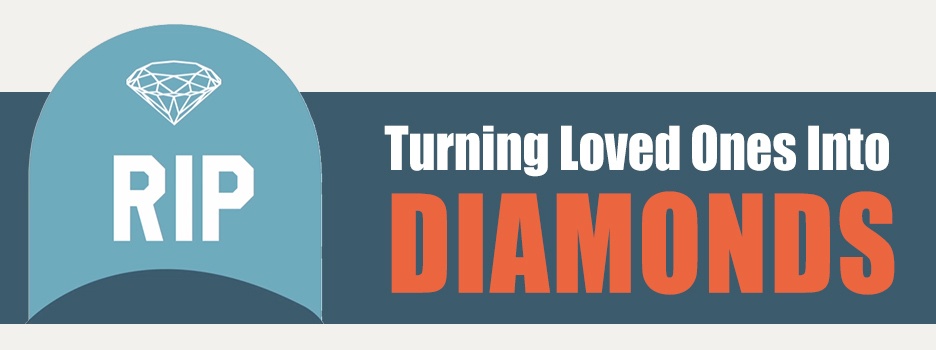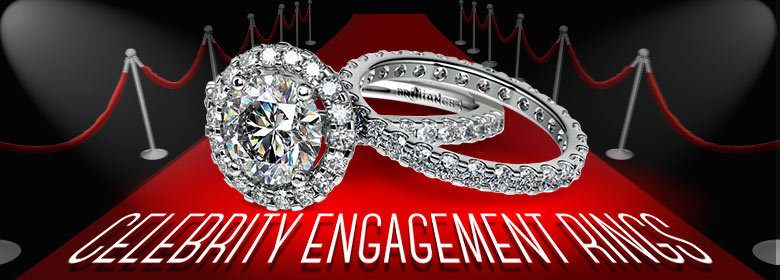
“Ashes to ashes, dust to…diamonds?” This twist on a familiar quote immediately grabbed my attention as I was half listening to an episode of “The Doctors.” I turned up the volume to hear Dr. Travis Stork say that through the use of technology, “that diamond could actually be one of our grandparents.”
Diamonds traditionally symbolize love and eternity, and over the past few years, several companies discovered a new way to eternally remember a loved one–by turning them into a diamond. Through the same process used to create a synthetic diamond, human ashes can be transformed into a sparkling gem, providing you with a twinkling reminder of your dearly departed on your finger or around your neck.
Imagine the possible conversation:
Stranger: “Oh! That’s a beautiful diamond in your ring! Was it a gift from your husband?”
You: “Funny you should ask, because it actually IS my husband.”
The Science Behind The Diamonds
All living organisms, from plants to animals to humans, contain the element carbon. Carbon is the prime component in diamonds, both natural and synthetic. To create a diamond in a laboratory, carbon is subjected to the same conditions–extreme heat and pressure–it would endure inside the earth to produce a natural diamond.
Carbon from humans (or pets) can be captured through cremated remains or a lock of hair (or fur). The remains or hair is sent to the laboratory where it is treated with chemicals in a special high-nitrogen, low-oxygen environment to extract the carbon, then the collected carbon is subjected to extremely high temperatures (over 3000 degrees Centigrade) inside a special, one-time-use-only crucible to remove the ash and convert the carbon to graphite.
Next, the graphite is placed in a unique diamond press where it will withstand a pressure of nearly 1,000,000 psi for several weeks or months, to replicate the pressure placed upon naturally-formed diamonds inside the earth. Specially designed “semi-spheres” are located inside each press to ensure an even amount of pressure is exerted and maintained on each side of the octahedral diamond growth chamber.
Over time, the graphite breaks down into individual atoms which crystallize into a rough diamond. The longer the graphite remains in the press, the larger the resulting rough diamond.
Unique–Just Like the Individual
Just like natural diamonds found inside the earth, diamonds created from human remains are unique to the individual from whom they are derived. For example, a person who wore false teeth, fillings, plates, screws, or a prosthetic limb will form a less pure diamond than an individual who was “all-natural” at the time of death. While most diamonds created from human ash or hair come out blue, the resulting color can range from black to clear depending on the amount of the trace mineral boron mixed into the carbon. Boron is found in certain foods, so your loved one’s diet could play a part in the color diamond he or she produces.
If you desire a specific color, some memorial diamond companies will add minerals to the carbon from your loved one to make your stone red, green, yellow, or clear.
Funeral or Memorial Diamond–Which is Cheaper?
Depending on the size of your diamond and the company you choose, the price for a memorial diamond starts at just under $2,500 for a stone ranging from 0.1 to 0.19 carat, but can cost upwards of $20,000 for a diamond over 1.5 carats. Some companies add an additional fee for changing the color of your diamond or for inscribing it with an identification number in case of theft.
According to the National Funeral Directors Association, the average cost for a funeral in 2012 was $7,045 (or $8,343 if the cemetery requires you to purchase a vault), and does not include cemetery, monument, marker, or crematory fees, nor does it include expenses like flowers or obituaries. The trend in funeral costs show they increase yearly, so it is projected that an average funeral will cost $7,566 by 2015.
The panel of doctors was torn as to whether the idea of wearing a loved one in a piece of jewelry was creepy or cool. Dr. Rachael Ross and Dr. Ian Smith both agreed the idea of keeping a deceased loved one close at all times was fantastic, while Dr. Drew Ordon said the money spent on such a novelty could be “better spent on education for the grandkids or something.” Ultimately, Dr. Stork said it best, “at the end of the day, I think it’s whatever the person who passed away would want–and this is certainly another option.”





